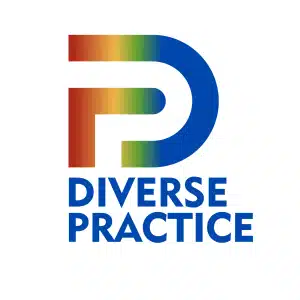What are Neonprouns?
Pronouns are words that substitute other nouns (name words). Examples include “she,” “he,” or “they.” Neopronouns are a category of new (neo) pronouns to use in place of nouns when referring to a person. For instance, xe/xem/xyr, ze/hir/hirs, ey/em/eir, and fae/faer/faers.
Who is Using Neopronouns?
Anyone can use neopronouns; however, they are most often used by non-binary, transgender, and gender-nonconforming people. They are personal to the individual who uses them and can be a way to have their humanity respected.
Some people feel comfortable implementing neopronouns after they’ve learned more about them. They can be a better fit for someone who is using they/them pronouns, for instance. The whole process can be an excellent way for people to learn more about themselves and language in general. Even though someone may still like they/them pronouns and understand why others would use them, neopronouns like ze/sir, for instance, might feel like they suit the person even more. In addition, they can be very affirming for someone’s gender identity.
Why Use Neopronouns?
According to psychologists, it’s essential to respect and acknowledge how people wish to be seen and addressed per their identity. According to Taryn Myers, a psychotherapist, and professor of psychology at Virginia Wesleyan University: “We should honor anyone’s chosen pronouns by using those pronouns rather than pronouns we prefer. People choose to use neopronouns because the existing pronouns, even they/them, do not fit for them. Neopronouns create comfort and a sense of belonging for that person.”
What Are Some Challenges to Using Neopronouns?
However, navigating neopronouns can be complex for many people. In addition, the English language and even American culture haven’t been accustomed to incorporating neopronouns into their language repertoire.
Also, some people get ultra-focused on pronouncing neopronouns, and they can find it daunting at first. However, once you learn how to use them, it becomes straightforward.
Debunking Myths
Neopronouns are real words that come from transgender, non-binary, and gender-nonconforming communities. They are most definitely real because they are meaningful, impactful, and understood by other people.
Some neopronouns were even adapted from other languages, like German, for instance. Many have been taken from science fiction and fantasy books, and some were invented by gender non-conforming folks who required pronouns that made them feel more affirmed.
Many people often use the “they aren’t real words” argument to discredit neopronouns. However, it is actual words anyways and can be a way to be more inclusive of transgender and gender non-conforming individuals.
People can only use one set of pronouns.
Some people might use one set of pronouns; however, some people use more than one set. For some people, both can feel right, and a pronoun like “they” can be easier to use in specific contexts. Also, constantly have to explain how to pronounce your neopronouns to people can be exhausting.
Also, other people aren’t “out” about their identity in their life and will choose pronouns that feel safe for them to use. In addition, genderfluid people may have shifting gender identities and change which ones they use. In essence, it’s essential to listen to what people tell you their pronouns are and to respect them. A good general rule of thumb is to use whatever pronouns that a person tells you to use. If a person uses two sets of pronouns and doesn’t tell you which one they prefer, feel free to use them interchangeably. Also, asking someone about them is never a bad idea.
How To Use Neopronouns
Here is a short guide for pronouncing some of the most common ones:
1. xe/xem/xyr (pronounced “zee/zem/zeer”)
- “Xe doesn’t want sauce with xyr chicken fingers.”
2. ze/hir/hirs (pronounced “zee/heer/heers”)
- “Ze doesn’t want sauce with hir chicken fingers.”
3. fae/faer/faers (pronounced “fay/fair/fairs”)
- “Fae doesn’t want sauce with faer chicken fingers.”
4. ey/em/eir (pronounced “ay/em/heir”)
- “Ey doesn’t want sauce with eir chicken fingers.”
Even though these are some common pronunciations for these neopronouns, the variations are endless. So, in essence, there’s nothing wrong with asking someone how to pronounce their neopronouns.
The process of asking someone doesn’t have to be complicated. Here is a short script for asking someone about their neopronouns: “Hi Billie! I know that you use “x-e” pronouns, and want to make sure I’m pronouncing them correctly. Can you clarify how you pronounce your pronouns?”
Putting into Practice
Now that you know how to use and pronounce neopronouns, it is essential to keep practicing and to do it even when the person isn’t around. Remember that sometimes trans and gender-nonconforming folks can struggle to keep up with each other’s language and neopronouns choices.
Be sure to keep practicing. You could even practice by writing a journal entry about hanging out with your friend that uses neopronouns; you could talk to yourself in a mirror and practice, or if given consent, use in conversations with other people.















